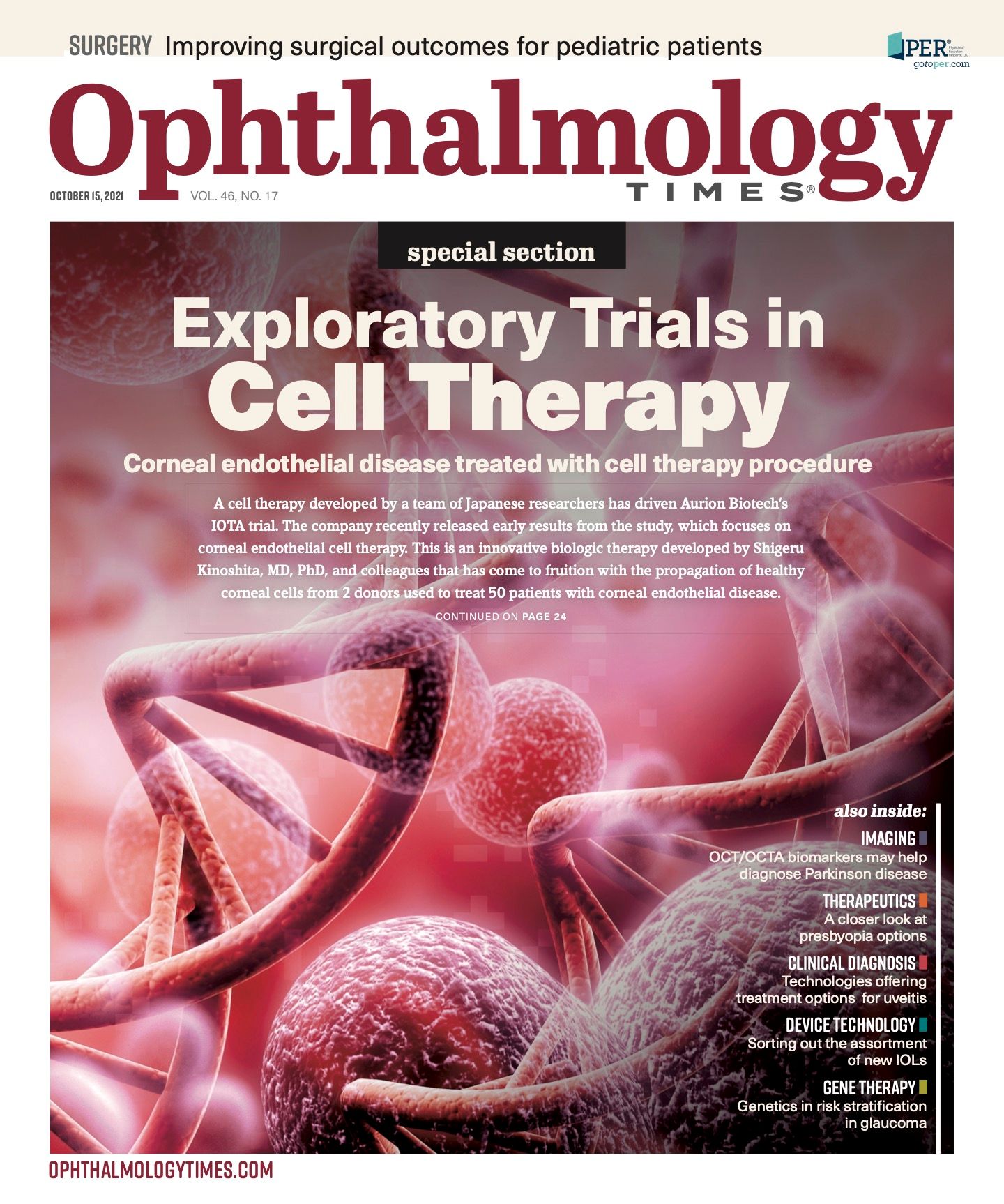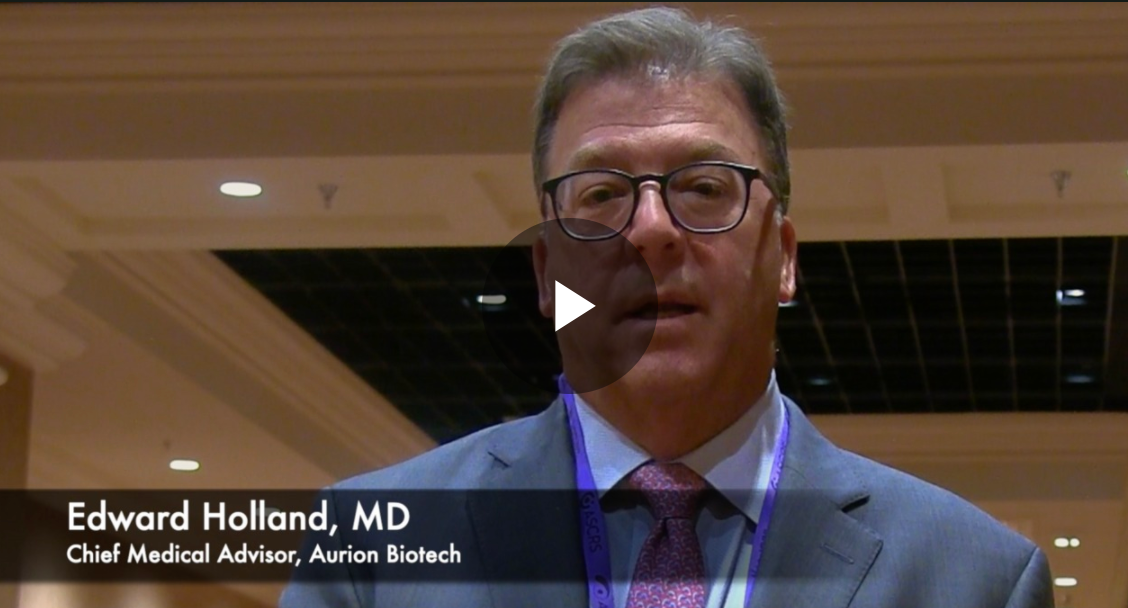Publication
Article
Digital Edition
Landmark treatment: Cell therapy advances options for corneal endothelial disease
Results from Aurion Biotech's IOTA trial reveals that a corneal endothelial cell therapy showed improvements in visual acuity and central corneal thickness, according to a team of Japanese investigators.

A cell therapy developed by a team of Japanese investigators has driven Aurion Biotech’s IOTA trial, and the company recently released early results from the study.
The treatment, corneal endothelial cell therapy, is an innovative biologic therapy developed by Shigeru Kinoshita, MD, PhD, a professor and chair of ophthalmology at Kyoto Prefecture University of Medicine in Japan, and colleagues and has come to fruition with the propagation of healthy corneal cells from 2 donors used to treat 50 patients with corneal endothelial disease.
According to the company, the preliminary findings from the IOTA trial showed improvements in visual acuity and central corneal thickness.
Corneal edema is the result of death or degradation of corneal endothelial cells. Because these cells do not regenerate, loss of vision can occur.
Up to now, transplantation procedures such as Descemet membrane endothelial keratoplasty (DMEK) and Descemet stripping automated endothelial keratoplasty (DSAEK) have been performed but are limited by their disadvantages—namely, they are complex surgeries that few surgeons perform and the supply of donor corneas is limited.
WATCH: Aurion Biotech: Treating endothelial disease with one donor
Potential advantages
In contrast, corneal endothelial cell therapy has several potential advantages:
- The supply of corneal endothelial cells is abundant. Endothelial cells from
one donor can replicate to treat up to 100 eyes. - The procedure is straightforward, can be performed relatively quickly, and is less complex than DMEK and DSAEK procedures.
- The procedure is patient friendly, with postoperative recovery in several hours as opposed to several days for the DSAEK and DMEK procedures.
The corneal endothelial cell procedure involves 3 steps.
First, the diseased endothelium is removed from the recipient cornea.
Second, the cultured cells are loaded into syringes, and the cell suspension is injected into the patient’s anterior chamber, where the cells rapidly self-align.
Third, the patient recovers for approximately 3 hours while in a prone position.
Related: Considering keratoconus-like changes after DMEK in Fuchs' dystrophy
To date, Kinoshita and his team have performed cell therapy procedures in 65 patients in Japan, with excellent clinical outcomes.
Key findings from these studies have been published in the New England Journal of Medicine1 and a follow-up 5-year study in Ophthalmology.2
IOTA trial
In the IOTA trial, conducted from November 2020 to May 2021, at the Clínica Quesada in San Salvador, El Salvador, the investigators injected the cells into the affected eyes with the goals of reducing corneal edema and restoring vision.
The IOTA trial was conducted as a proof of concept of previous studies of the cell therapy procedure developed by Kinoshita and colleagues.
The results showed that the procedure was safe, well tolerated, and efficacious.
This is the first trial of the corneal endothelial cell therapy procedure to be conducted outside of Japan.
LISTEN: Evaluating safety, efficacy of TP03 for Demodex blepharitis treatment
Investigators are Gabriel Quesada, MD, and Rodrigo Quesada, MD, in El Salvador and Edward Holland, MD; Elizabeth Yeu, MD; John Berdahl, MD; Matt Giegengack, MD; John Vukich, MD; and Kevin Waltz, MD, in the US.
“This is a landmark moment for the treatment of corneal endothelial disease,” said Holland, who is chief medical advisor and medical advisory board chair at Aurion Biotech.
Holland reported that in part 1 of the trial, the investigators treated 16 patients with cells garnered from 1 donor. In the second part of the trial, they treated 34 patients from 1 donor.
Moreover, Holland pointed out that the study confirmed the procedure is accessible for surgeons and minimally invasive for patients.
“The initial readout from this proof-of-concept trial is promising. Patients have demonstrated improvements in visual acuity and central corneal thickness,” Holland said.
Related: Corneal mechanical sensitivity in individuals with chronic pain
Greg Kunst, Aurion Biotech’s chief executive officer, said the IOTA trial has provided insights and confirms that the procedure can restore vision to patients suffering from blindness resulting from corneal endothelial disease.
“Until Professor Kinoshita’s astonishing innovations in corneal endothelial cell therapy, vision loss caused by corneal edema has remained largely underserved,” he said. “That is because of a chronic undersupply of donor corneas and current standards of care that involve exceptionally complex procedures. Because we have acquired this intellectual property, we look forward to advancing this cell therapy through regulatory approval in the US and elsewhere to restore vision to patients throughout the world.”
The patients will be followed for 12 months to assess the longer-term safety and efficacy of the treatment and after the study ends.
--
Edward Holland, MD
E: edward.holland@uc.edu
Holland is chief medical advisor and medical advisory board chair at Aurion Biotech.
---
References
1 . Kinoshita S, Koizumi N, Ueno M, et al. Injection of cultured cells with a ROCK inhibitor for bullous keratopathy. N Engl J Med. 2018;378:995-1003. doi:10.1056/NEJMoa1712770
2. Numa K, Imai K, Ueno M, et al. Five-year follow-up of first 11 patients undergoing injection of cultured corneal endothelial cells for corneal endothelial failure. Ophthalmology. 2020;128(4):504-514. doi:10.1016/j.ophtha.2020.09.002

Newsletter
Don’t miss out—get Ophthalmology Times updates on the latest clinical advancements and expert interviews, straight to your inbox.







